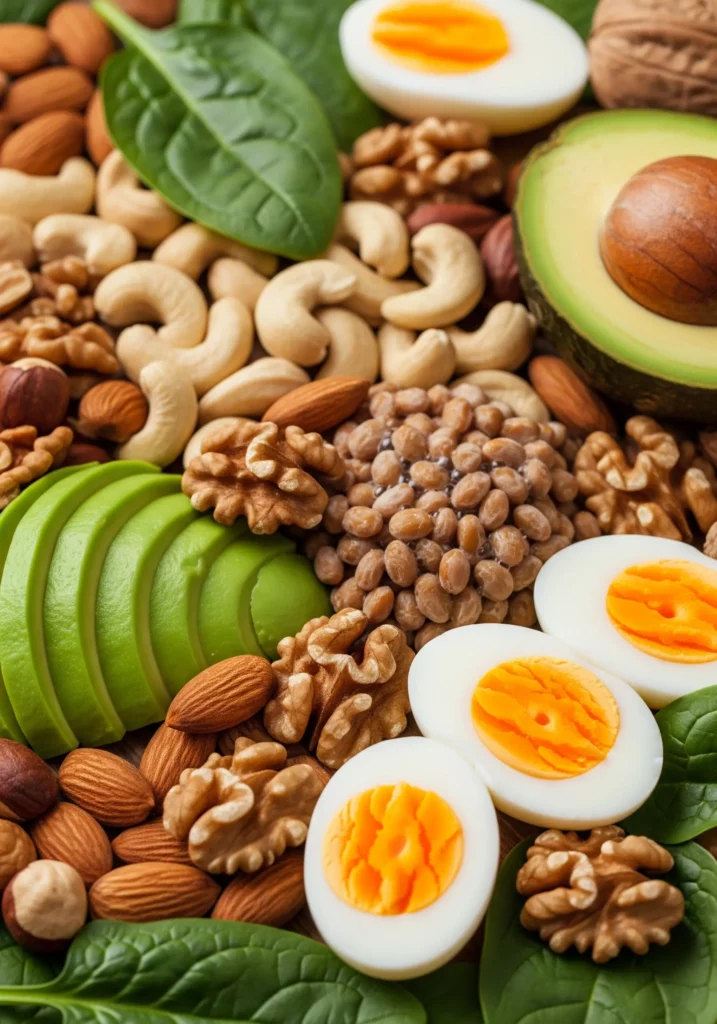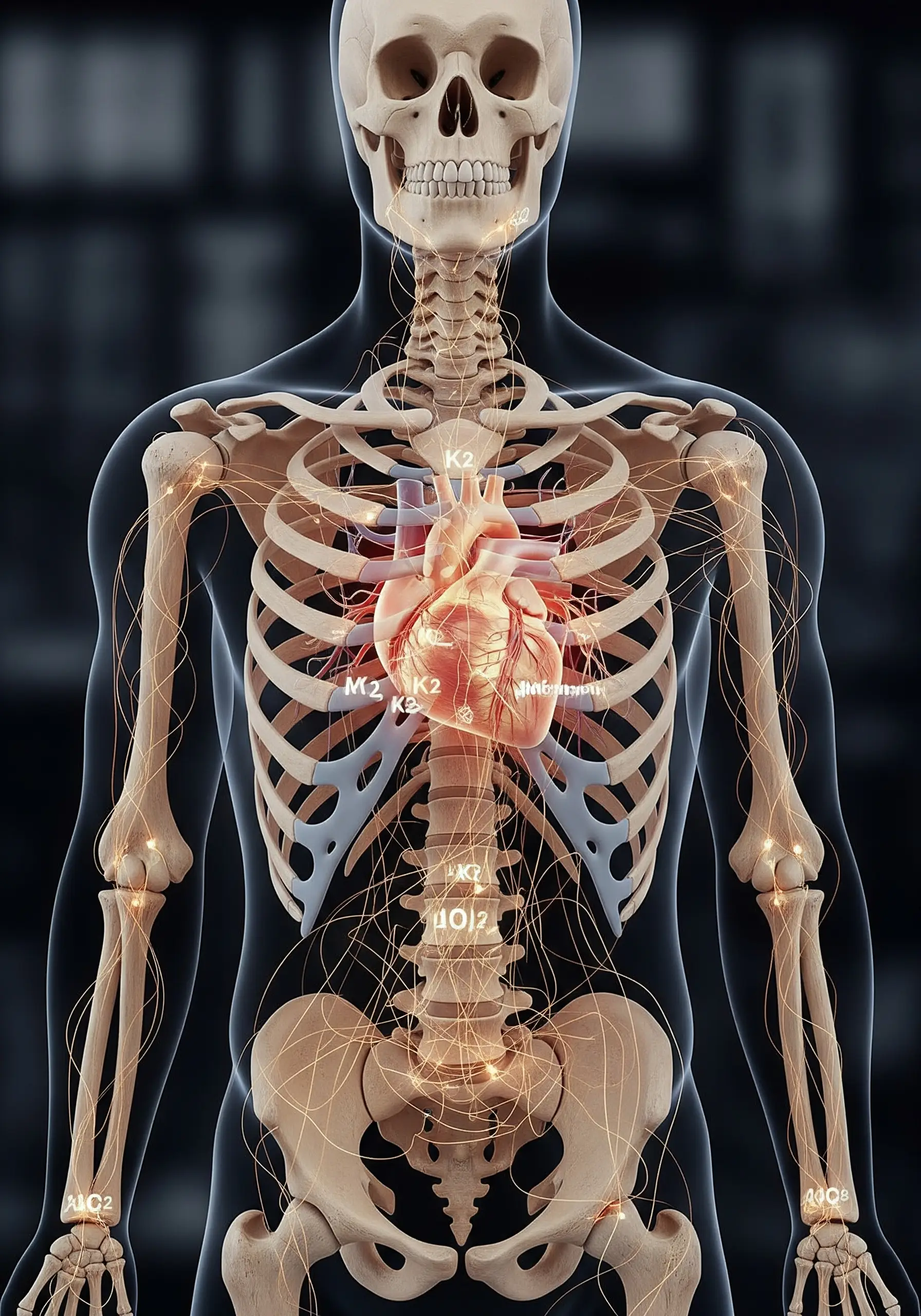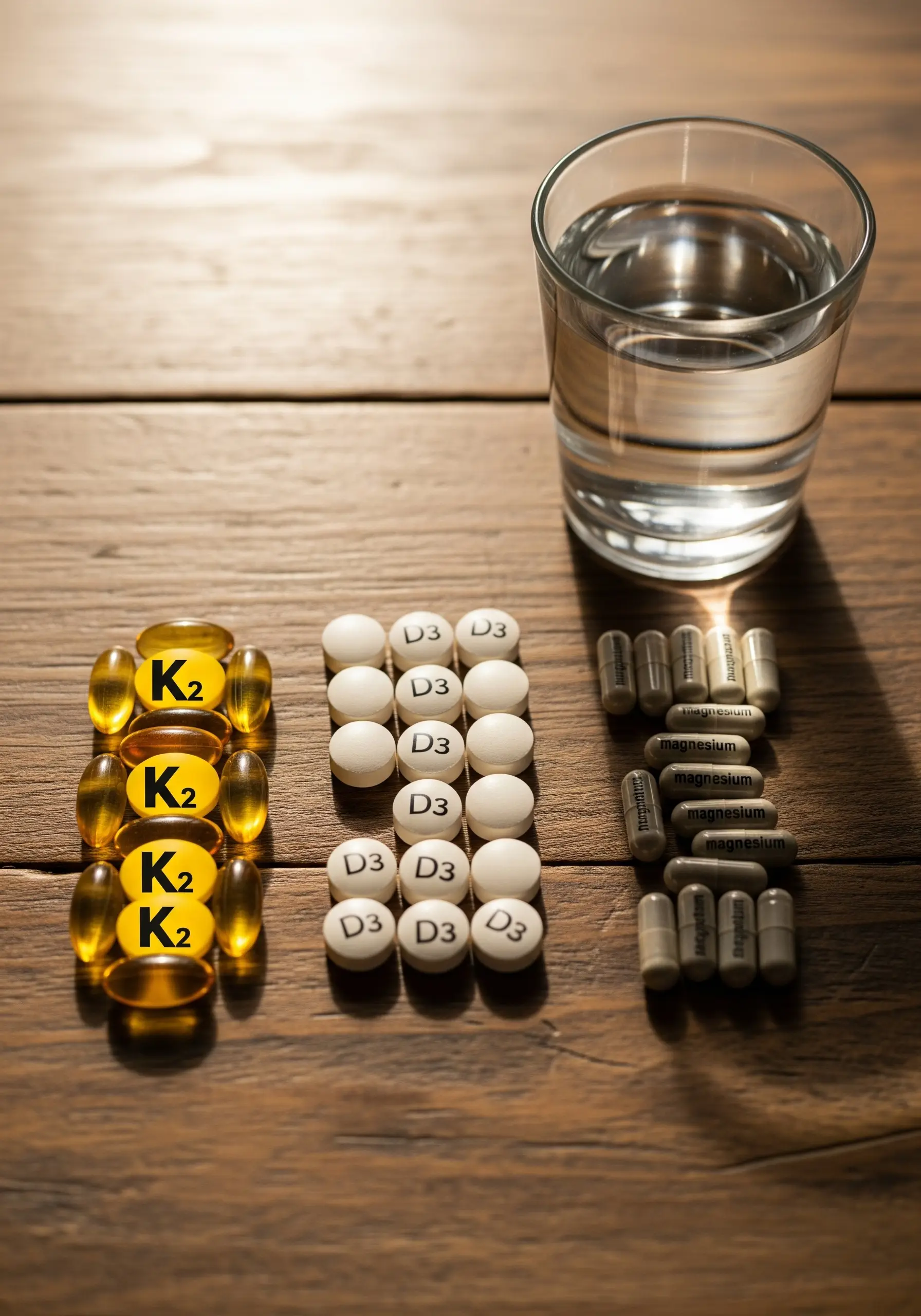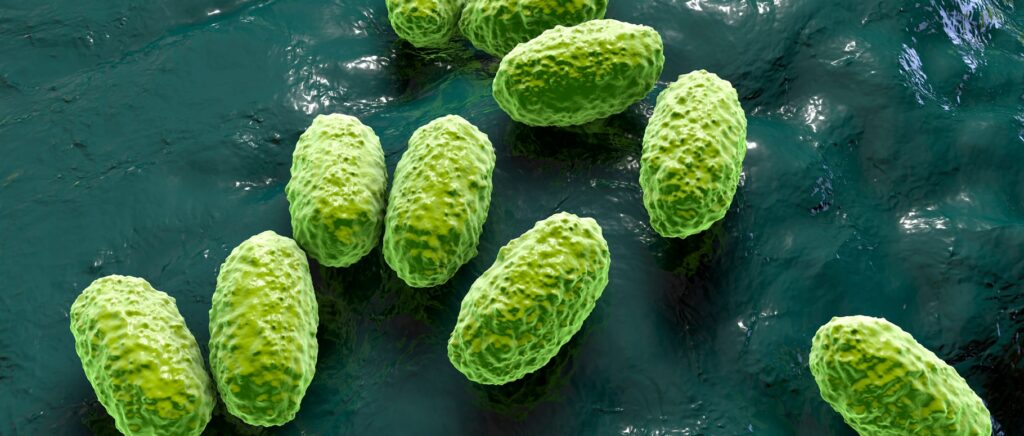

In November, when the days get shorter, most people receive less vitamin D3 — the very vitamin that triggers calcium absorption.
However, without two other key nutrients — vitamin K2 and magnesium — this calcium can settle in the wrong place: in the blood vessels instead of the bones.
The result is the “calcium paradox”: strong arteries or strong bones, but not both at the same time.
Modern studies show that vitamin K2 (especially the MK-7 form) and magnesium work together, activating enzymes that “direct” the path of calcium in the body.
This discovery became a breakthrough in nutraceuticals — a true natural anti-calcification therapy.

How the Vitamin K2 and Magnesium Duo Works
Vitamin D3 increases calcium absorption in the intestines, but it does not determine where this calcium will go.
This is where the following come into play:
-
Vitamin K2 (MK-7): activates the protein osteocalcin in bones and MGP (matrix Gla protein) in blood vessels. Both proteins “capture” calcium and direct it where it is needed — into bone tissue, not into artery walls.
-
Magnesium: necessary for activating γ-carboxylation enzymes (which activate K2) and vitamin D-dependent metabolic enzymes. Without magnesium, K2 and D3 cannot work at full capacity.
Researchers from University of Maastricht (2024) proved that magnesium deficiency reduces the effectiveness of K2 in preventing vascular calcification by 1.8 times.

Table 1. Biochemical Interaction of Nutrients
| Nutrient | Primary Function | Interaction with Other Components |
|---|---|---|
| K2 (MK-7) | Activates osteocalcin and MGP | Requires magnesium for γ-carboxylation |
| Magnesium | Coenzyme in over 300 reactions, including D3 metabolism | Enhances K2 effect, prevents hypercalcemia |
| D3 (cholecalciferol) | Increases calcium absorption | Without K2, risk of calcium deposition in vessels |

Why Magnesium Deficiency Is So Common
According to EFSA, 2024, over 65% of the European population consumes less magnesium than recommended.
The main reasons are:
-
refined grains and reduced mineral content in soils;
-
excess caffeine and alcohol, which deplete magnesium;
-
stress and high cortisol levels, which “burn” magnesium in the cells.
Magnesium deficiency manifests as muscle spasms, high blood pressure, nervousness, and insomnia — all of which impair microcirculation and further promote vascular calcification. Read more about magnesium in the article “Magnesium — the Key Nutrient for Stress“.
Table 2. Practical Application of K2 + Mg Combination
| Group | Main Issue | Recommended Combination |
|---|---|---|
| Women over 40 | Decreased bone density | K2 (100 mcg) + D3 (2000 IU) + Mg (300 mg) |
| People with hypertension | Vascular rigidity, calcification | K2 (150 mcg) + Mg (400 mg) |
| Office workers, stress | Cramps, sleep disturbances | Mg (400 mg) + K2 (100 mcg) + B-complex |
| Vegetarians / low milk intake | Calcium and D3 deficiency | K2 + Mg + Ca citrate + D3 |
Additional Effects of Magnesium and K2
-
Antioxidant effect: K2 reduces free radical formation in the vascular wall.
-
Anxiety reduction: magnesium stabilizes cortisol levels and supports GABA neurotransmitters.
-
Improved muscle function: calcium without magnesium causes spasms; together they maintain a contraction–relaxation balance.
A clinical study by J. of the American Heart Association (2023) showed that taking K2 + Mg for 12 weeks reduces arterial stiffness (PWV) by 8%, comparable to the effect of mild antihypertensive therapy.
Q&A About Vitamin K2 and Magnesium
1. Can K2 and magnesium be taken together with calcium?
Yes, but calcium is best in citrate or glycerophosphate form — it is more easily absorbed and does not overload the vessels.
2. Which form of K2 is the most effective?
MK-7 has the longest half-life (up to 72 hours) and more effectively activates MGP in the vessels.
3. Can it be combined with D3 in one supplement?
Yes, this is the optimal form — “K2+D3+Mg” — the trinity of calcium metabolism.
4. Is the effect of K2 felt immediately?
No, the effect accumulates over 2–3 months, but the results are stable.
5. Can K2 be taken during warfarin therapy?
No, it is contraindicated because K2 affects blood clotting through vitamin-K-dependent factors.
Conclusions
Vitamin K2 and magnesium are a underappreciated alliance in the prevention of cardiovascular and bone diseases.
They not only prevent vascular calcification but also direct calcium into the “right path” by activating natural remineralization enzymes.
In November, when reduced sunlight lowers D3 levels, the K2 + Mg combination becomes a support for healthy calcium metabolism and a calm heart.
References
-
Vermeer C. et al., Nutrients, 2024 — “Vitamin K2, magnesium and vascular calcification.”
-
Bohn T. et al., European Journal of Nutrition, 2025 — “Magnesium status and vitamin D metabolism.”
-
McCann J. C., Ames B. N., Journal of Nutrition, 2023 — “Vitamin K metabolism and carboxylation.”
-
Ketteler M. et al., J. Am. Heart Assoc., 2023 — “K2 supplementation reduces arterial stiffness.”
-
EFSA Report, 2024 — “Magnesium intake and European dietary deficiency.”



